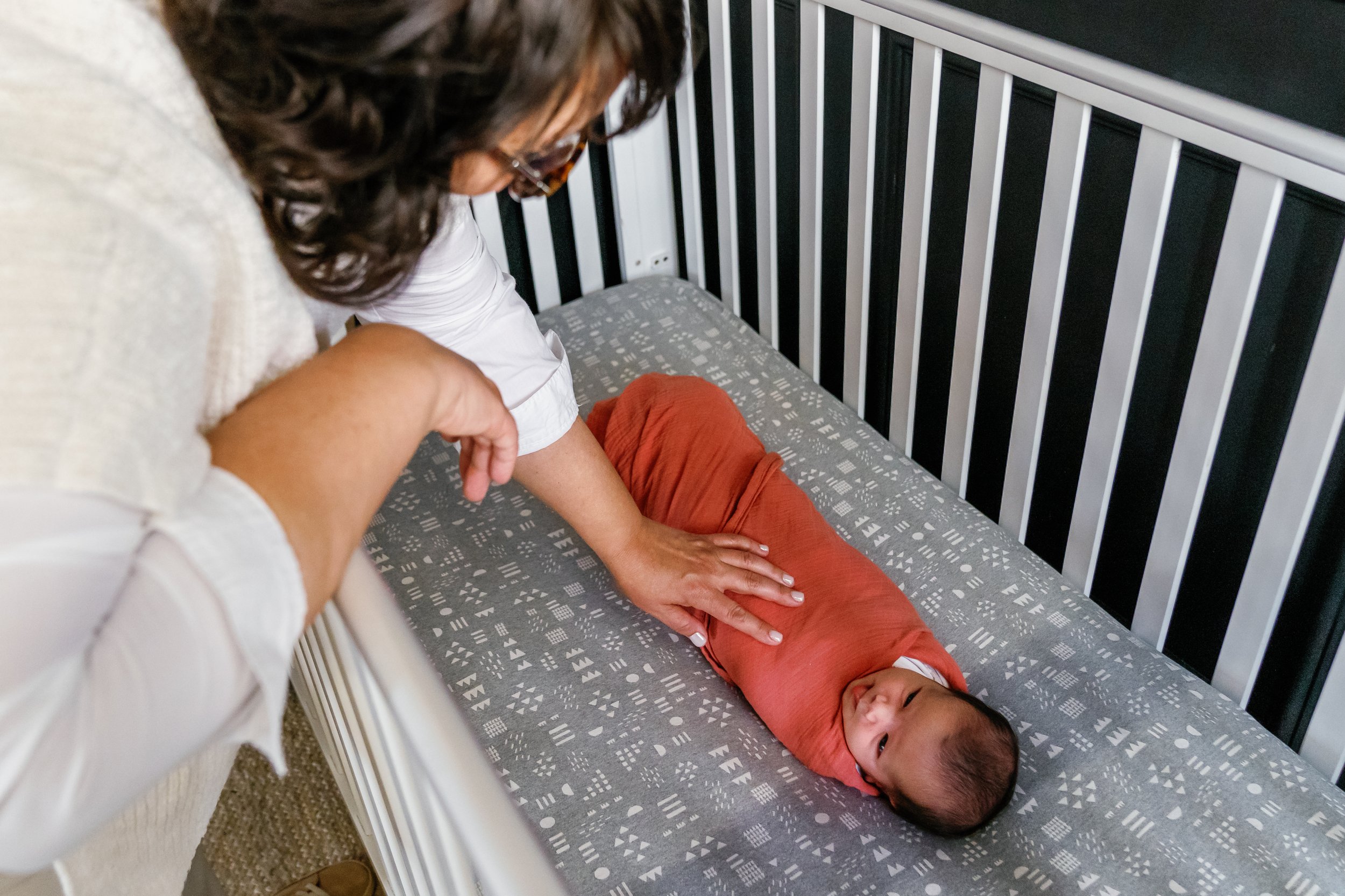Creating a Healthy and Safe Sleep Environment for Your Baby
As parents, one of our primary concerns is ensuring our baby's safety and well-being, especially during sleep. A healthy and safe sleep environment is crucial for your baby's development and your peace of mind. This post will guide you through the essential steps to create a sleep sanctuary that promotes safety, comfort, and restful nights for your little one.
Understanding the Basics of a Safe Sleep Environment
The foundation of a safe sleep environment is understanding and implementing the guidelines set by pediatric health experts. These include:
Use a Firm Sleep Surface: A firm mattress in a safety-approved crib, bassinet, or play yard is essential. The mattress should be covered with a fitted sheet with no other bedding or soft items in the sleep area.
Back to Sleep: Always place your baby on their back to sleep, for naps and at night, to reduce the risk of Sudden Infant Death Syndrome (SIDS).
Creating a Comfortable Sleep Environment
Comfort is key in ensuring your baby sleeps well. Here are some tips to create a cozy sleep environment:
Optimal Room Temperature: Keep the room at a comfortable temperature of 68-72 degrees to keep baby from overheating, as that can be dangerous. Make the best decision based on your home as this range can vary.
Consider a White Noise Machine: Gentle, soothing sounds can help mask household noise and create a calming environment for your baby.
Dim Lighting: Soft, dim lighting is less stimulating and helps promote a calming atmosphere. Red light is the least stimulating and a very useful tool for night time feedings, diaper changes, and if you need to check on your baby during the night.
Safety Measures to Prevent Hazards
Safety is paramount when it comes to your baby's sleep environment. Here are some crucial safety measures:
Avoid Loose Bedding and Soft Toys: Keep the crib free of pillows, loose bedding, stuffed animals, and bumpers to reduce the risk of suffocation, SIDS, and entanglement. Your baby’s sleep space should be clear of any/all objects.
Proper Sleepwear: Appropriate bedtime attire for baby’s are swaddles and sleep sacks.
Secure Crib Hardware: Regularly check the crib for loose screws or broken parts to ensure it remains a safe sleeping space.
Monitoring and Technology for Safe Sleep
While nothing replaces direct supervision, technology can be a helpful tool in monitoring your baby:
Baby Monitors: A good quality baby monitor can help you keep an eye (or an ear) on your baby when you're not in the room.
Movement Monitors: Some parents find peace of mind using movement monitors that alert them if no movement is detected over a certain period.
The Role of Routine in Promoting Safe Sleep
Establishing a bedtime routine can significantly aid in creating a safe and healthy sleep environment:
Consistent Bedtime Routine: A predictable routine helps signal to your baby that it's time to wind down and go to sleep. This can include a bath, a book, and a lullaby.
Daytime Naps: Consistent nap times during the day can help regulate your baby's sleep patterns and ensure they are not overtired at bedtime.
Addressing Common Sleep Challenges
Even with the perfect environment, babies may face sleep challenges. Here are some tips to address them:
Understanding Sleep Regressions: Be aware that sleep regressions are normal at certain stages, like at four months and eight months.
Responding to Night Wakings: Learn to differentiate between a baby needing attention and one who might simply be transitioning between sleep cycles.
The Importance of a Safe Sleep Environment for Development
A safe sleep environment is not just about immediate safety; it's also about supporting your baby's long-term development:
Promoting Healthy Sleep Habits: A safe and comfortable sleep environment helps establish healthy sleep habits that can benefit your child throughout their life.
Supporting Physical and Cognitive Development: Quality sleep in a safe environment is crucial for your baby's physical growth and cognitive development.
Creating a healthy and safe sleep environment for your baby is one of the most important steps you can take as a parent. By following these guidelines, you'll provide a space that not only ensures your baby's safety but also promotes restful, rejuvenating sleep. Remember, every baby is different, so it's essential to stay attuned to your baby's specific needs and adjust accordingly. Here's to peaceful nights and happy, healthy development for your little one!

